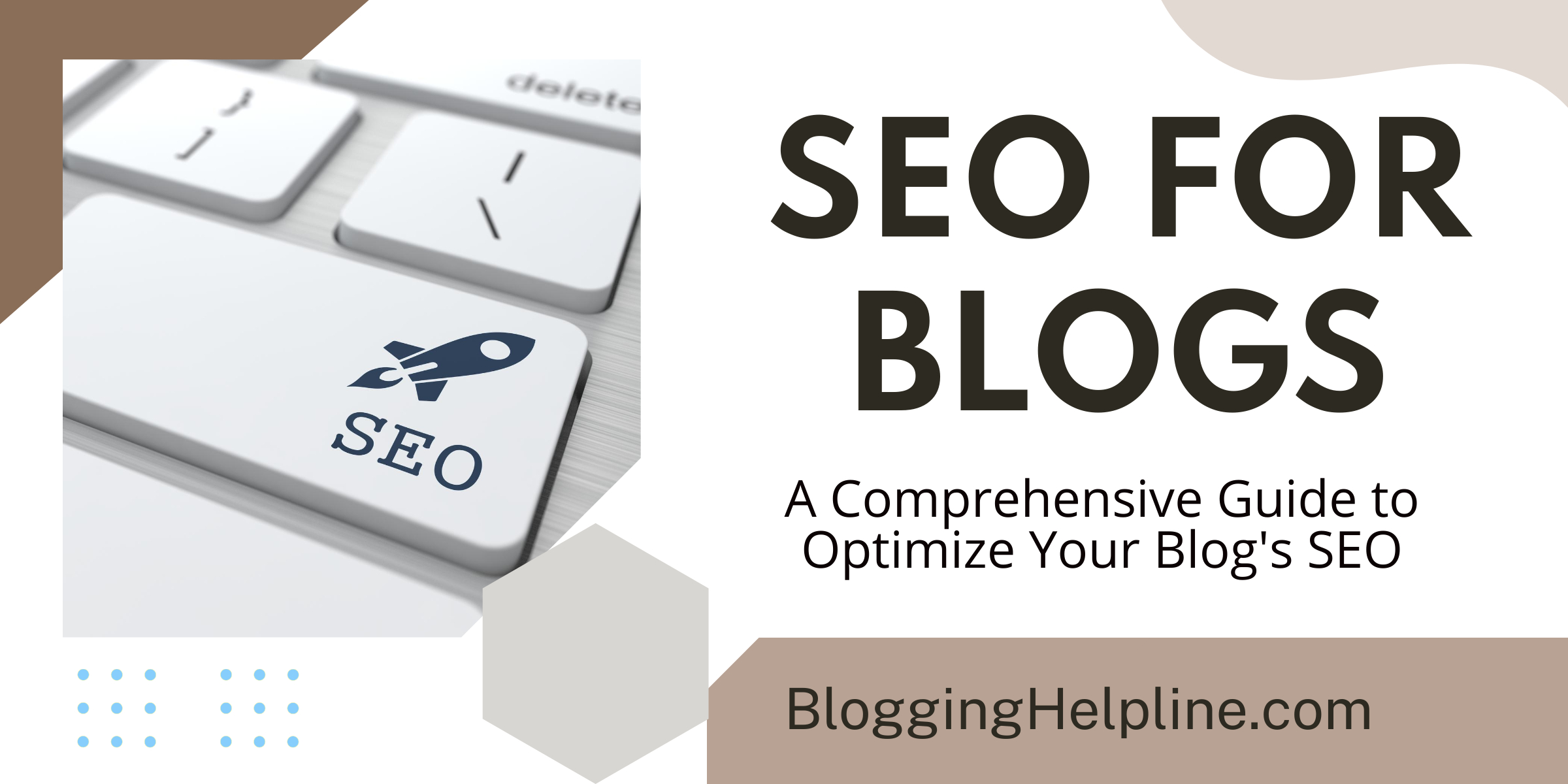Table of Contents
Introduction
In the digital age, search engine optimization (SEO) is critical for bloggers to increase traffic to their website and improve their visibility online. With so many blogs offering the same content, it’s important to optimize your blog’s SEO to stand out and rank higher on search engine results pages (SERPs).
In this guide, we’ll explore how to optimize your blog’s SEO by focusing on keyword research, content creation, and technical SEO.
Keyword Research
Define Your Target Audience
Before you can begin optimizing your blog’s SEO, you need to identify your target audience. Ask yourself: who are you trying to reach? What are their interests and pain points? Once you have a clear understanding of your target audience, you can start focusing on the keywords that will best attract them.
Conduct Keyword Research
Keyword research is critical to SEO success. When conducting keyword research, focus on long-tail keywords with low competition but high search volume. These types of keywords are more specific and targeted, making it easier for your blog to rank higher on SERPs.
Several keyword research tools are available online, including Google Keyword Planner, Ahrefs, and Moz Keyword Explorer. These tools offer valuable insights into search volume, competition, and related keywords.
Analyze Your Competitors
It’s also essential to analyze your competitors’ SEO strategies. Identify blogs within your niche that rank high on SERPs and examine their content and keywords. This analysis can provide insights into which keywords and phrases to use in your content and how to structure your blog posts for optimal SEO.
Content Creation
Produce High-Quality, Targeted Content
Producing high-quality, targeted content is crucial to optimizing your blog’s SEO. Your content should be informative and engaging, providing value to your readers. It should also focus on your target audience’s interests and pain points, incorporating the keywords you identified during your research.
When creating content, aim for in-depth articles of at least 1,500 words. Longer articles tend to rank higher on SERPs and provide more value to readers.
Use Headings and Subheadings
Headings and subheadings break up your content into sections, making it easier to read and digest. They also provide an organizational structure for search engines to crawl and index, improving your blog’s overall SEO.
When using headings and subheadings, use H2 tags for main headings and H3 tags for subheadings. Aim to include your target keyword phrase in at least one of your headings.
Include Visuals
Visuals, such as images and videos, can improve your blog’s SEO by keeping readers engaged and reducing bounce rates. They also provide an opportunity to optimize your content further by including alt tags and captions with your target keywords.
Make sure your visuals are high-quality and relevant to your content. Avoid using stock photos or images that don’t add value to your content.
Incorporate Internal and External Links
Incorporating internal and external links into your blog posts is critical to optimizing your SEO. Internal links connect your content and allow search engines to crawl and index your site, while external links provide credibility and context for your readers.
When using internal links, make sure to link to other relevant content within your blog. When using external links, make sure they point to reputable sources with high domain authority.
Technical SEO
Improve Your Site Speed
Site speed is a crucial factor in SEO success. Slow page load times can increase bounce rates and negatively impact your blog’s ranking on SERPs.
Several tools are available to help improve your site speed, including Google PageSpeed Insights and GTmetrix. These tools provide actionable insights into areas for improvement, such as optimizing images, reducing server response times, and minifying code.
Make Your Site Mobile-Friendly
With more users accessing the internet on mobile devices, it’s critical to ensure your blog is mobile-friendly. Mobile-friendly sites are more likely to rank higher on SERPs and provide a better user experience.
Several tools, including Google’s Mobile-Friendly Test, can help you determine if your site is mobile-friendly. If your site isn’t mobile-friendly, consider using a responsive design or creating a separate mobile site.
Optimize Your URLs
Optimizing your URLs can improve your blog’s SEO by making it easier for search engines and users to understand your content. Use descriptive, keyword-rich URLs for your blog posts and avoid using long, complicated URLs.
When creating URLs, use hyphens to separate words and avoid using underscores. Also, minimize the use of stop words, such as “a,” “the,” and “and.”
Conclusion
In conclusion, optimizing your blog’s SEO is critical to increasing traffic and visibility online. By focusing on keyword research, content creation, and technical SEO, you can improve your ranking on SERPs and reach your target audience more effectively.
Remember to produce high-quality, targeted content, use headings and subheadings, and incorporate internal and external links. Also, improve your site speed, make your site mobile-friendly, and optimize your URLs.
By following these SEO best practices, your blog can stand out in a crowded online space and attract more readers and followers.
